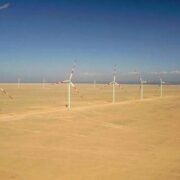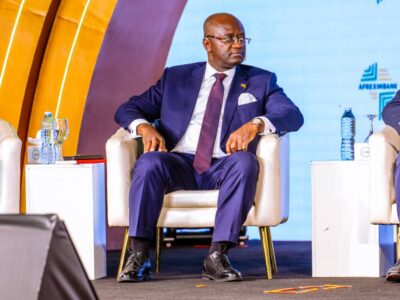
This article is part of a series produced in collaboration with the African Development Bank in light of its sixtieth anniversary. Please visit our dedicated portal to read about the Bank’s history and its activities on the continent.
Africa’s power pools play a crucial role in supporting regional integration by facilitating grid interconnection between neighboring countries. These interconnected grids allow nations to buy and sell power across borders through a shared market mechanism.
Investing in the vital infrastructure that underpins these power pools will as such remain a key focus for the African Development Bank as it intensifies efforts to light up and power Africa under Mission 300.
The Bank highlighted this commitment during a press event in Dodoma, Tanzania, in the run up to the Africa Energy Summit in Dar es Salaam this January. It said that the Iringa-Shinyanga transmission line in Tanzania had emerged as a vital link in the Eastern Africa Power Pool (EAPP) and that it would help boost the continent’s fledgling but promising regional electricity markets.
This multi-partner project – backed by five financial partners including the African Development Bank and the World Bank – involves a 400 kV transmission line linking Iringa in the southern highlands to Shinyanga in the northern parts of the country.
The 670 km transmission line reinforces a preexisting 220 kV line and has significantly boosted energy reliability for households and businesses by linking power generation sources in southern Tanzania to load centers in the north.
The African Development Bank stressed that the project is unique not only for its local impact, but also for its crucial role in supporting the interconnectivity of power pools across the wider region. It is currently the only transmission line capable of facilitating electricity trade between the EAPP and the Southern African Power Pool (SAPP).
Hub of electricity trading
“It will be the hub of electricity trading because it’s going to be the backbone connecting Tanzania to her neighbouring countries,” Andrew Muguwa, principal operations officer, African Development Bank, said in Dodoma.
“As much as it is in Tanzania,” he explained, “it also has a regional aspect, in that it will contribute to interconnecting the African power grid, right from Ethiopia to Kenya and Tanzania, down to southern Africa.”
EAPP has 13 member countries while the SAPP has 12 member countries. The Iringa-Shinyanga transmission line will help foster electricity trade across all countries in both pools, Muguwa noted.
“In the next few years it will be interconnected to the southern African power pool through Zambia. And by interconnecting to Kenya, it is in one way or another connected to Ethiopia, Uganda and the broader East African Power Pool,” Muguwa said.
Community impact
The Iringa-Shinyanga transmission line has also benefited local communities by improving the reliability of power supply. Baraka Mponda, acting medical officer in charge at the Dodoma Regional Referral Hospital, says that before the project was completed, power supply was erratic, forcing the hospital to rely on backup generators during outages.
“Now the hospital rarely uses the backup generator,” he noted, adding that this has encouraged new investments in modern medical equipment. “We have an ICU (intensive care unit), theatre with anaesthetic machines, the central sterilisation unit with very big machines and wards… all this has happened because we have stable and reliable power” he said.
Mponda highlighted that before the transmission line project was completed, the hospital served less than 1000 patients per week. Now, with more stable power and improved services, it serves 1000-2000 per week, with bed occupancy averaging 360 out of 393 beds. “It’s become much busier. Before this was a regional hospital, now it has been upgraded into a referral hospital,” he said.










Comments